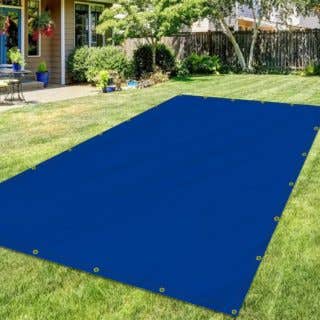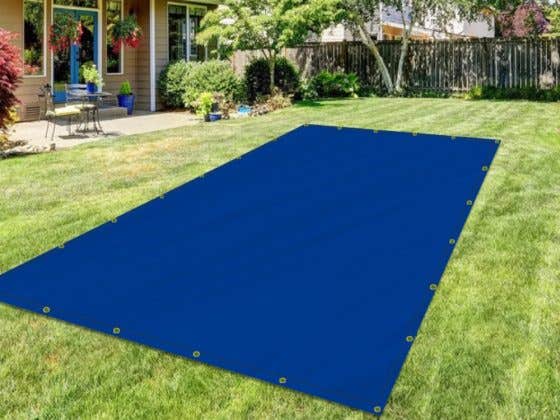Tarps are versatile tools used for various purposes, from protecting outdoor equipment to providing shelter from the elements. Industrial tarps are useful in various aspects of our daily lives. However, proper folding and storage are key to extending the life of your tarp and ensuring it’s ready for use when you need it.
In this blog, we’ll explore the best techniques for folding and storing different types of tarps, including canvas tarps, heavy-duty ones like vinyl tarps and more. Whether you’re dealing with large tarps or small, waterproof tarps, these tips will help you maintain their condition and functionality.
Understanding Different Types of Tarps
Before diving into the folding and storing techniques, it’s important to understand the different types of tarps and their uses; tarp sizes can vary from extra large tarps to smaller sizes. If you’re looking for tarps for sale, this knowledge will help you select the best practices for your specific tarp needs.
Canvas Tarps: Canvas tarps are durable and breathable, making them ideal for covering equipment and outdoor use.
Heavy-Duty Tarps: Known for their robustness, heavy-duty tarps are designed for tough conditions and heavy loads.
Mesh Tarps: Mesh tarps offer ventilation and are commonly used for shade and debris control.
Waterproof Tarps: Essential for protecting items from rain and moisture.
Shade Tarps: Used to provide relief from the sun, perfect for outdoor activities.
Figure Out How to Fold a Tarp
Folding a tarp correctly can prevent damage and make storage more efficient. Here’s a step-by-step guide on how to fold a tarp properly:
Clean the Tarp: Before folding, ensure the tarp is clean and dry. Remove any dirt or debris, as particles can cause abrasions over time. If it’s a waterproof tarp, ensure it’s completely dry to avoid mildew.
Lay It Flat: Spread the tarp on a clean, flat surface. This helps prevent wrinkles and ensures an even fold.
Fold in the Edges: Start by folding the edges towards the center. For large tarps, fold each side inward until the tarp forms a rectangle or square shape.
Fold in Sections: Depending on the size of the tarp, you may need to fold it in sections. For example, an extra-large tarp might need to be folded in thirds or quarters.
Roll or Fold: Once you’ve achieved a manageable size, you can either roll the tarp or fold it further. Rolling is often preferred for large tarps, such as truck tarps, as it reduces creases and is easier to store.
Secure the Tarp: For added protection, secure the folded tarp with a strap or tie to keep it compact and prevent it from unfolding.
Storing Tarps: Best Practices

Proper storage is crucial for extending the lifespan of your tarps. Here are some tips to consider:
Choose the Right Storage Location: Store tarps in a dry, cool place away from direct sunlight. Exposure to UV rays can degrade the material over time. For indoor storage, consider using a closet or a designated storage area.
Use a Storage Bag: For smaller specialty tarps, such as mesh tarps or vinyl tarps, a storage bag can keep them organized and protected. Ensure the bag is breathable to prevent moisture buildup.
Avoid Storing on the Ground: If storing outdoors or in a garage, avoid placing the tarp directly on the ground; instead, use shelves or hang the tarp to prevent exposure to moisture and dirt. If you need to learn how to secure a tarp to the ground, ensure it is properly anchored to avoid damage or wear.
Keep Away from Sharp Objects: Ensure the storage area is free of sharp objects that could puncture or tear the tarp. This is especially important for heavy-duty canvas tarps and canvas tarps. Poly tarps are lightweight and resistant to tears, making them a perfect choice for many tasks.
Regular Inspections: Periodically inspect stored tarps for any signs of wear, mildew, or damage. Early detection of issues can prevent more significant problems.
Specific Tips for Different Types of Tarps
Different types of tarps require tailored storage and folding techniques. Here are some specific tips:
Canvas Tarps: These should be thoroughly dried before folding to prevent mildew. Store in a breathable bag or container to keep them in good condition.
Heavy-Duty Tarps: Given their robustness, heavy-duty tarps are often best stored rolled rather than folded. This prevents creases and potential stress on the fabric.
Mesh Tarps: These can be folded similarly to canvas tarps but should be stored in a way that avoids trapping moisture. A breathable storage bag is ideal.
Waterproof Tarps: Ensure these are completely dry before storing to prevent mildew. Rolling is generally preferable to folding to avoid creases that can compromise the waterproof coating.
Shade Tarps: These should be stored in a dry place to maintain their effectiveness. If the tarp has been exposed to significant dirt or debris, clean it before storage.
Conclusion
Folding and storing tarps correctly can greatly extend their lifespan and ensure they remain in good condition. By following these techniques, you can keep your tarps ready for any situation, whether it’s covering a truck, providing shade, or protecting equipment. Remember to choose the right storage method based on the type of tarp and its intended use. With proper care, your tarps will serve you well for years to come.













Recent Comments